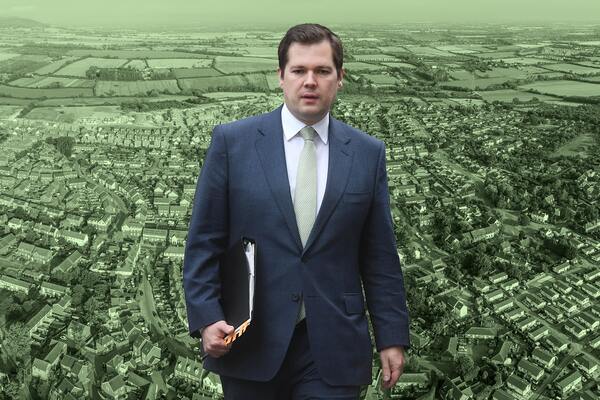You are viewing 1 of your 1 free articles

Darren Rodwell is an executive member at London Councils, housing spokesperson at the LGA, and leader of Barking & Dagenham Council
...moreMisguided planning reforms could unleash a new generation of slum housing
The government’s planning reforms could be a disaster for London, and for delivery of affordable housing, says Darren Rodwell
We were already wary of the government’s direction of travel on planning reform, but the white paper published last week still managed to shock and disappoint.
The proposals make crystal clear the government’s determination to sideline local authorities’ role in the planning system.
“The assumption is that councils are a hindrance to development – and that reducing local planning powers and democratic accountability will lead to a housebuilding boom that somehow solves the housing crisis. This couldn’t be more wrong”
For example, abolishing Section 106 agreements and the Community Infrastructure Levy that we use to ensure affordable housing targets are met.
The replacement Infrastructure Levy would be handed over at occupation – meaning the borrowing required would be at councils’ risk. I hate to think how that might have played out this year, with London boroughs currently facing a £1.4bn funding shortfall due to pandemic pressures.
The white paper also seeks to erode councils’ control over development in our communities by moving to zoning arrangements, which weaken local scrutiny.
The assumption is apparently that we are a hindrance to development – and that reducing local planning powers and democratic accountability will lead to a housebuilding boom that somehow solves the housing crisis.
This couldn’t be more wrong.
London boroughs are desperate to deliver more homes. For many years, the capital has suffered from the most severe housing crisis in the country, which can be seen in our appalling rates of homelessness.
London accounts for two-thirds of homelessness in England. More than 58,000 homeless households are placed in temporary accommodation by London boroughs. There are currently 243,000 London households on council housing waiting lists.
“We enthusiastically support the government’s ambitions to ‘build, build, build’ – particularly when it comes to affordable and social housing”
This is why we enthusiastically support the government’s ambitions to “build, build, build” – particularly when it comes to affordable and social housing.
We’ve repeatedly made the case for more investment, highlighting how inadequate funding holds back delivery and how the government could do so much more to boost council housebuilding.
I’m immensely frustrated – to say the least – that when London recently went to the government to seek financial support for building 50,000 new homes, we didn’t get the backing we required.
It’s in London boroughs’ interests to facilitate development rather than act as a stumbling block. This explains why we grant around 50,000 planning approvals each year. At the moment there are approximately 305,000 new homes in the capital’s development pipeline – the highest level ever recorded.
But, unfortunately, we don’t have the power to make developers build out the planning permissions we grant. And the white paper certainly didn’t include granting councils this power among its proposals, even though that could make a massive difference to delivery.
“It’s no exaggeration to say that the white paper is potentially disastrous for Londoners – leading to fewer affordable homes being built, as well as a decline in quality”
Instead, the white paper’s focus is almost entirely on taking councils’ powers away. Powers that enable us to protect our communities’ long-term interests. To support government targets on reducing homelessness and carbon emissions. To ensure that the right sort of homes are built to the right standard in the right places.
Boroughs are hugely concerned by the white paper’s implications. It’s no exaggeration to say that the white paper is potentially disastrous for Londoners – leading to fewer affordable homes being built, as well as a decline in quality.
It would be a tragedy if misguided planning reforms unleashed a new generation of slum housing.
Our objections are clear – and we know they’re shared across wider local government and the housing sector. Ministers must listen and rethink their approach.
Darren Rodwell, executive member for housing and planning, London Councils










